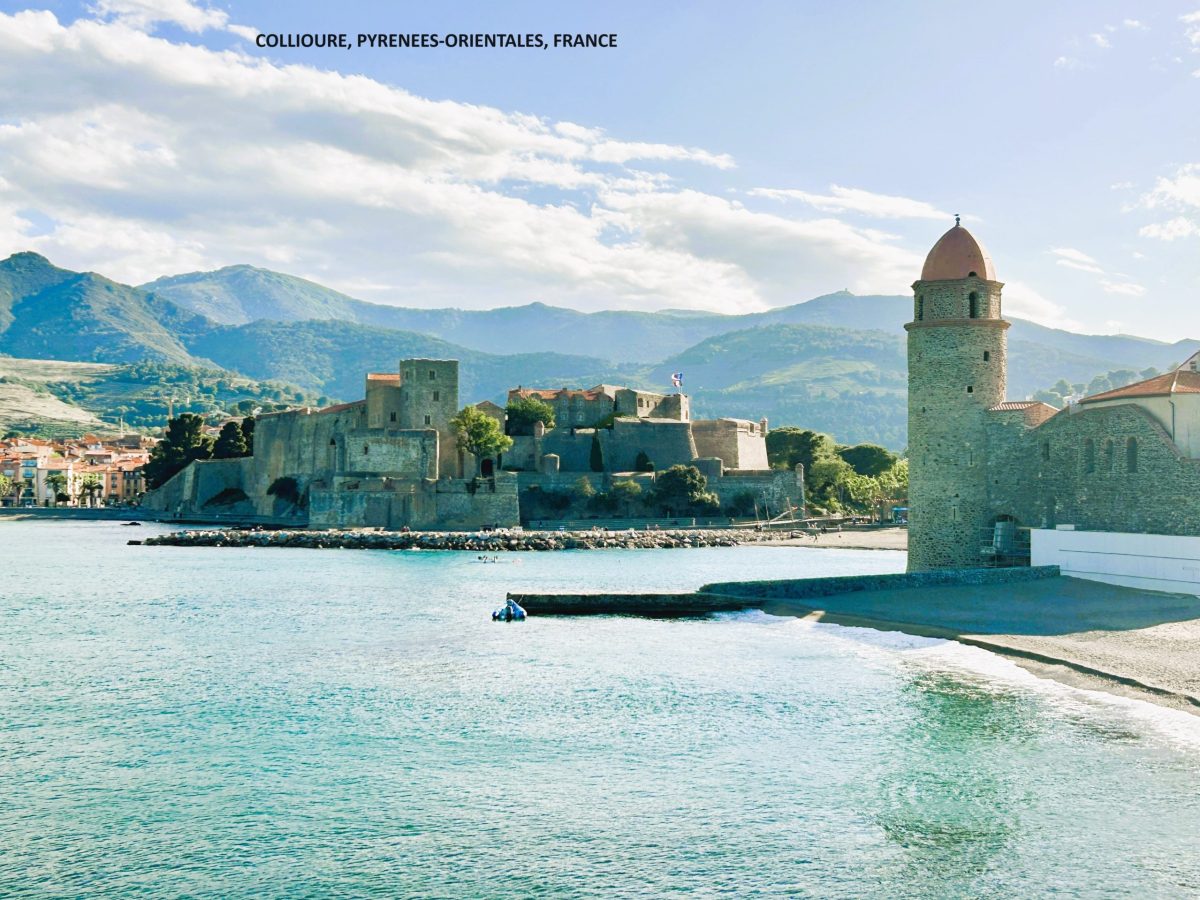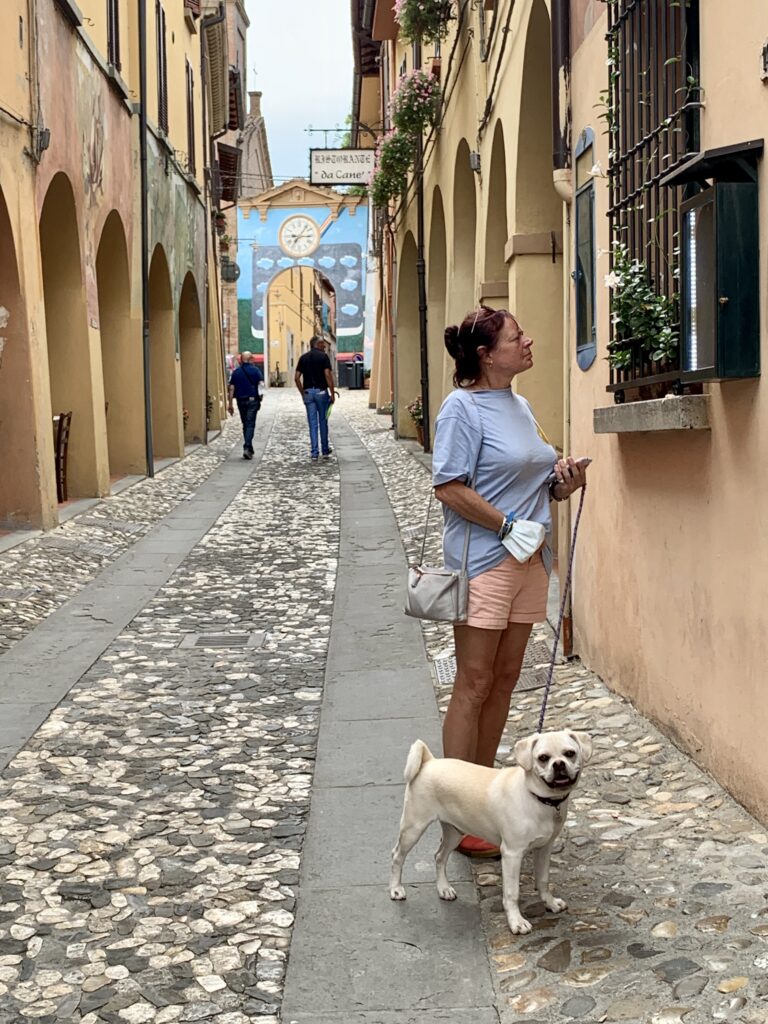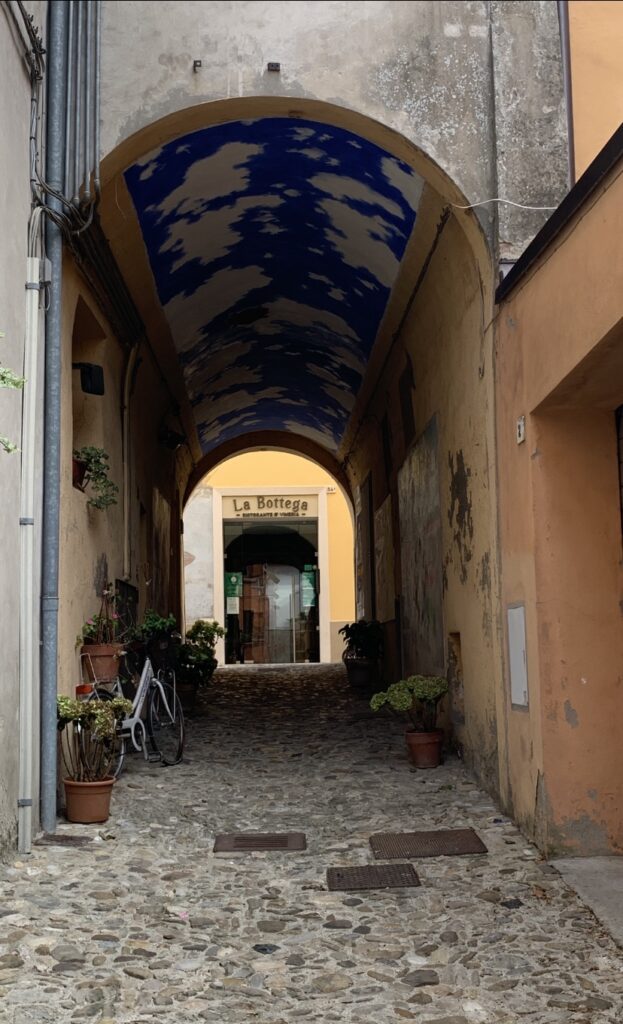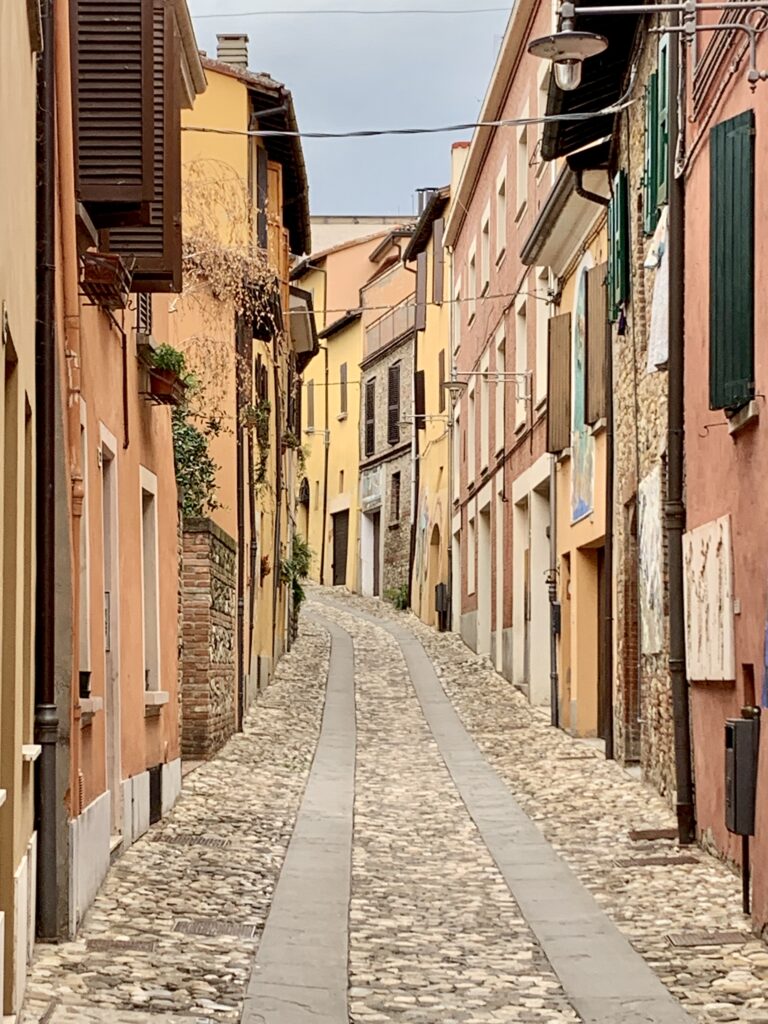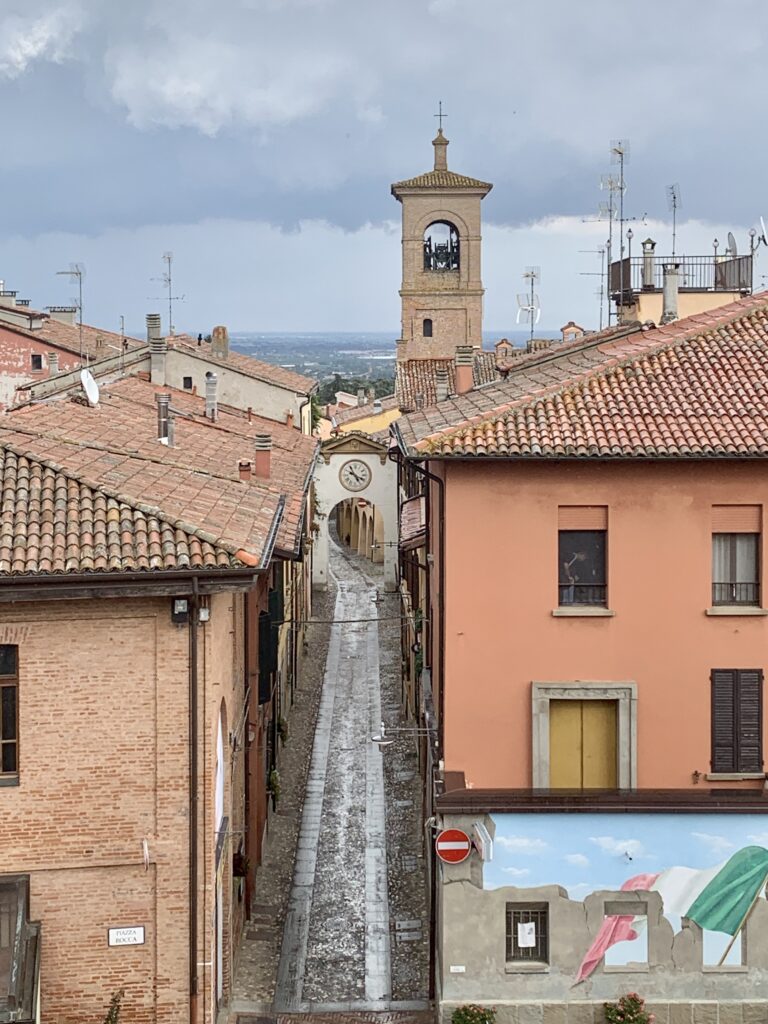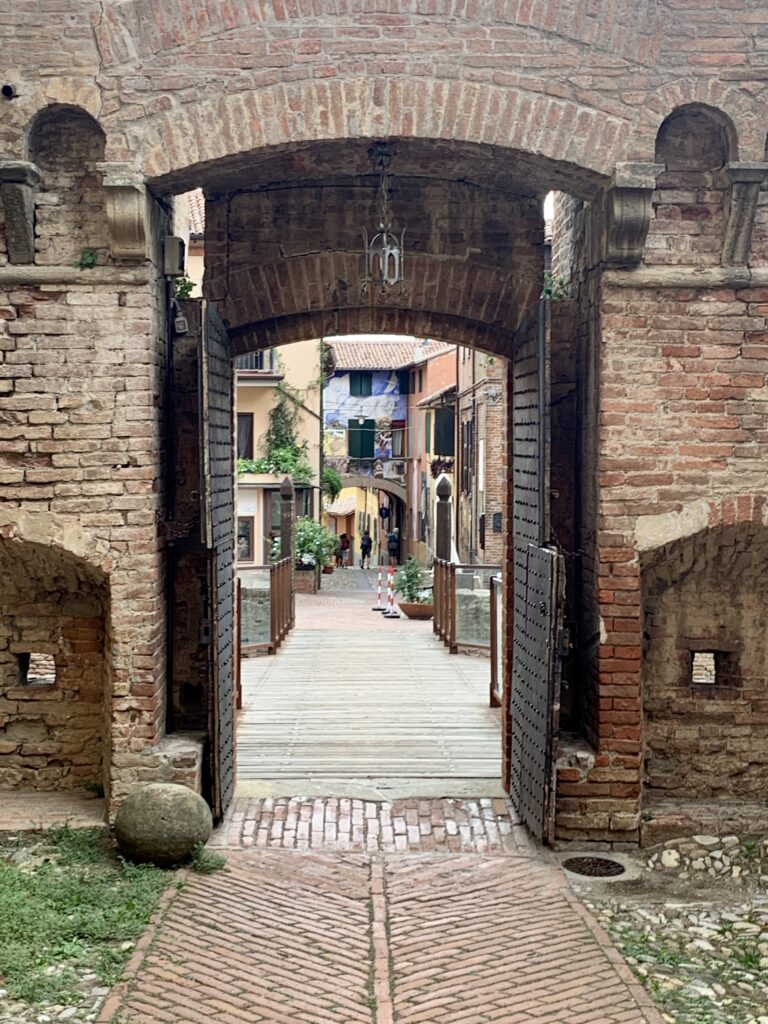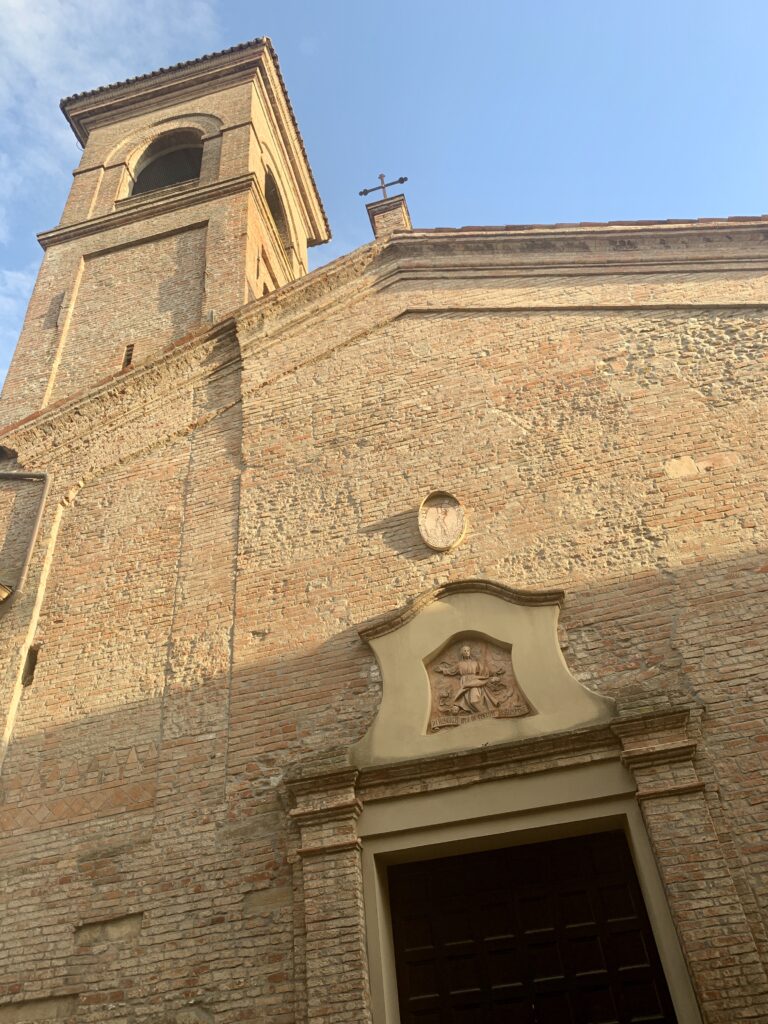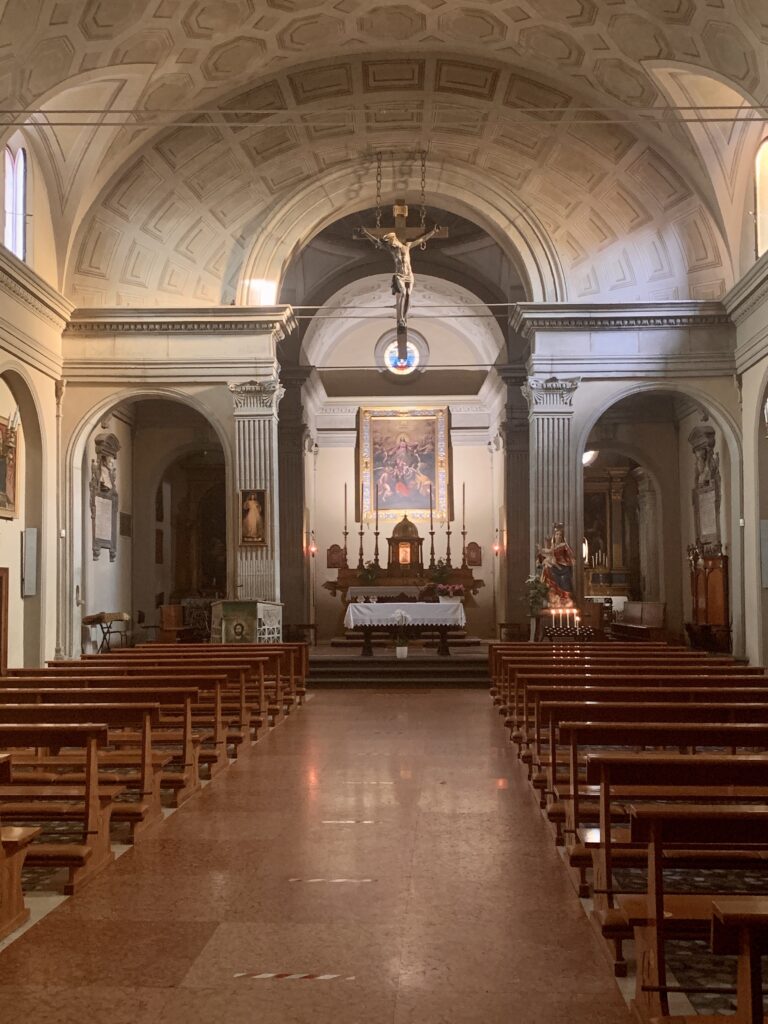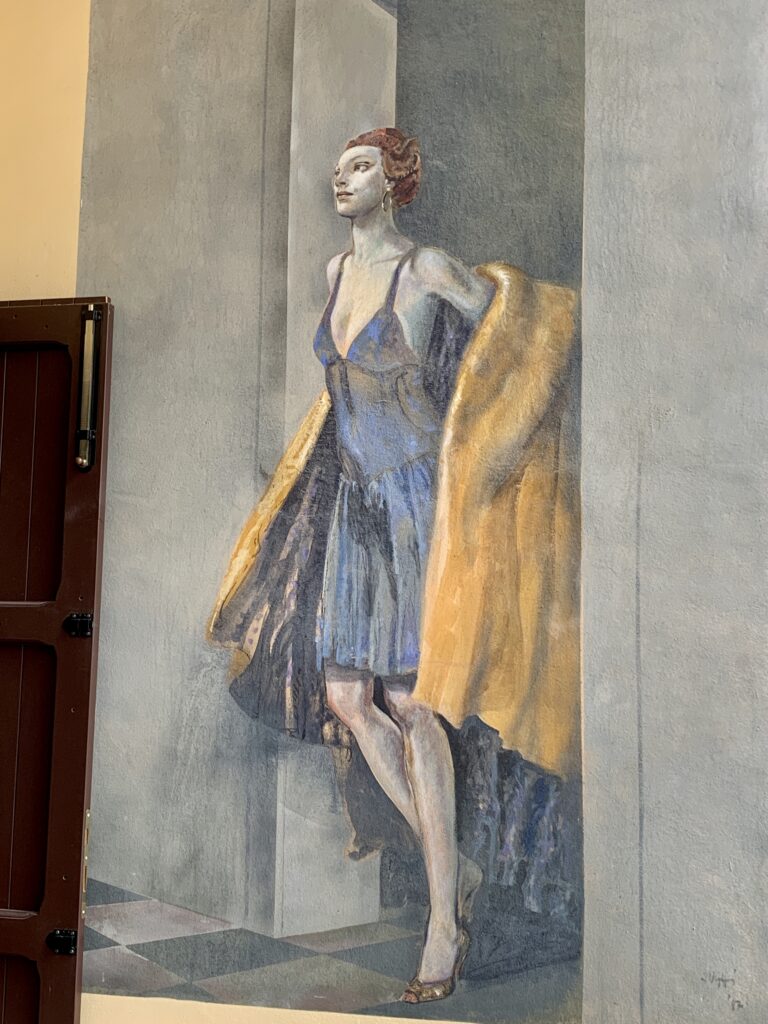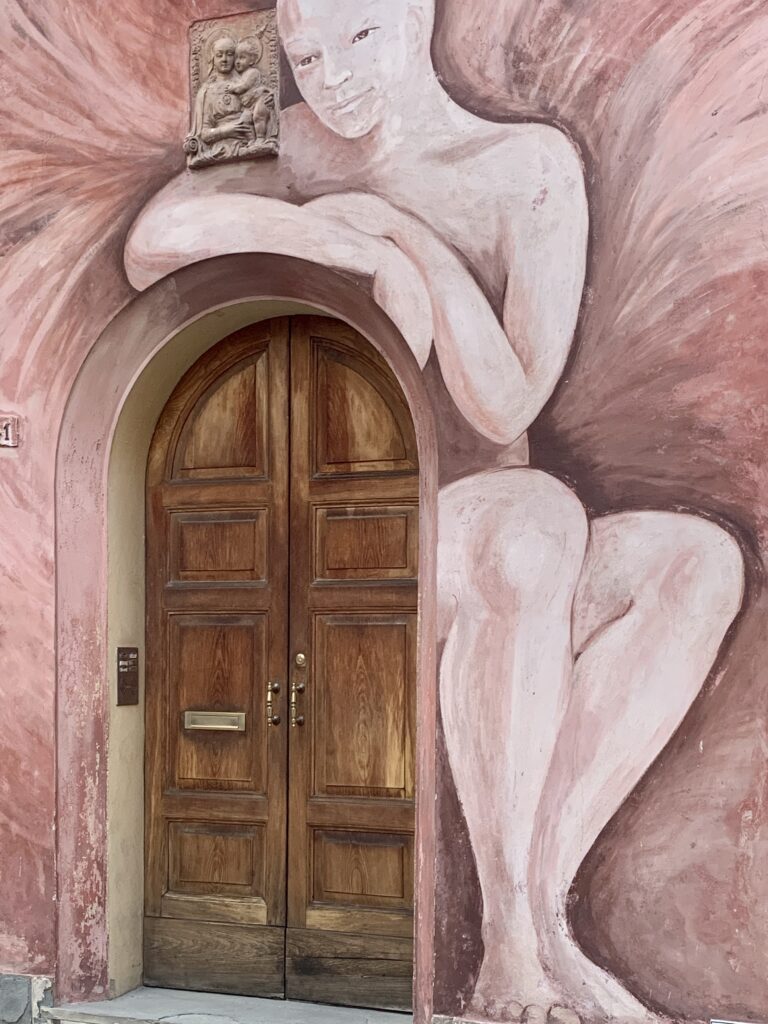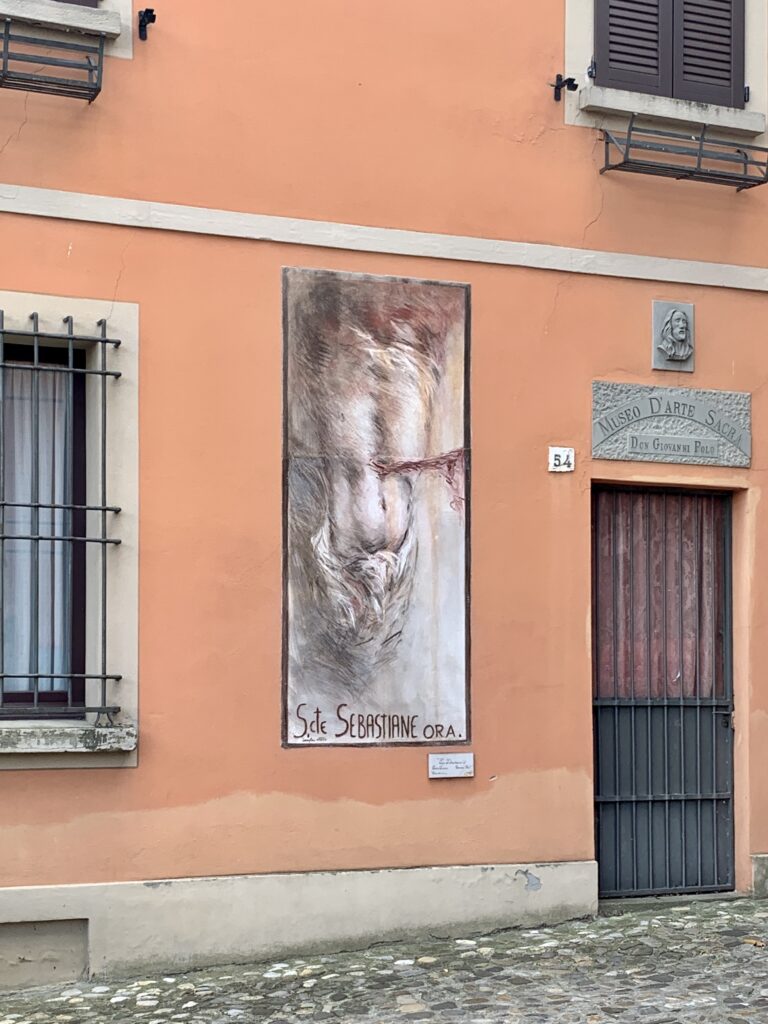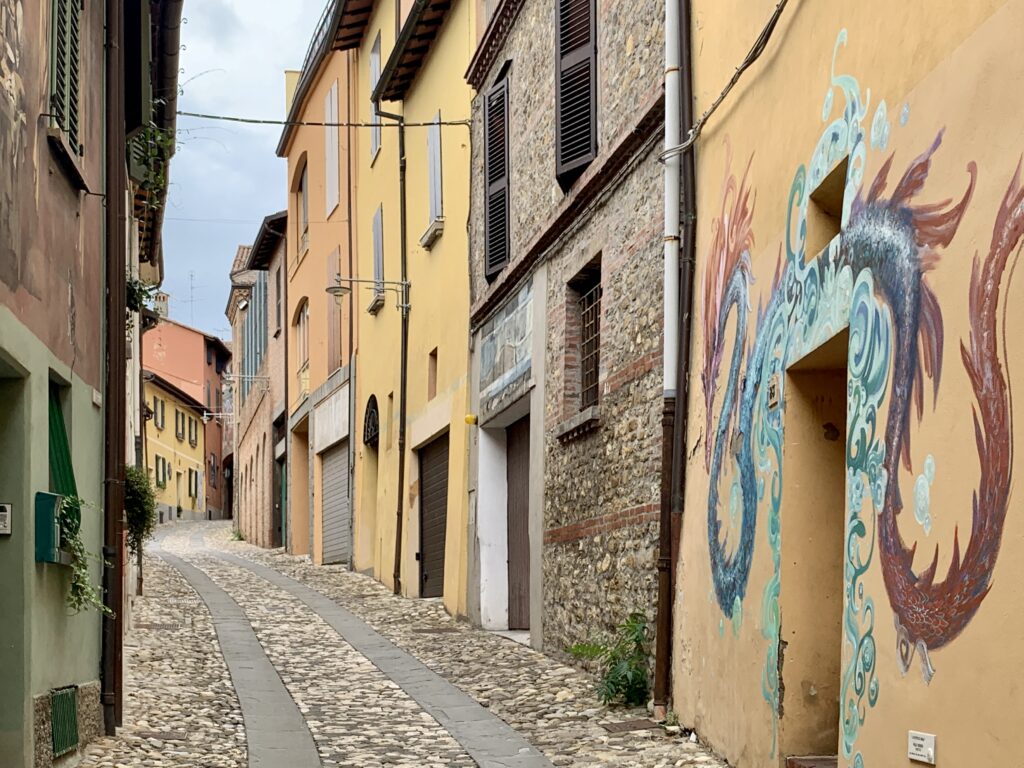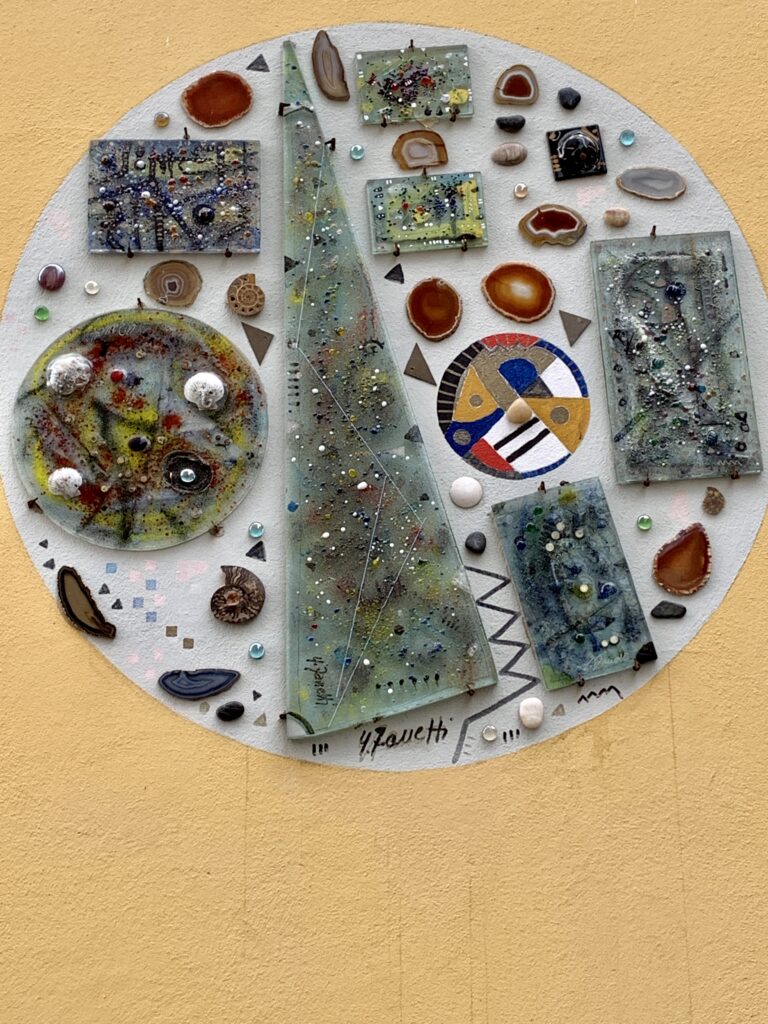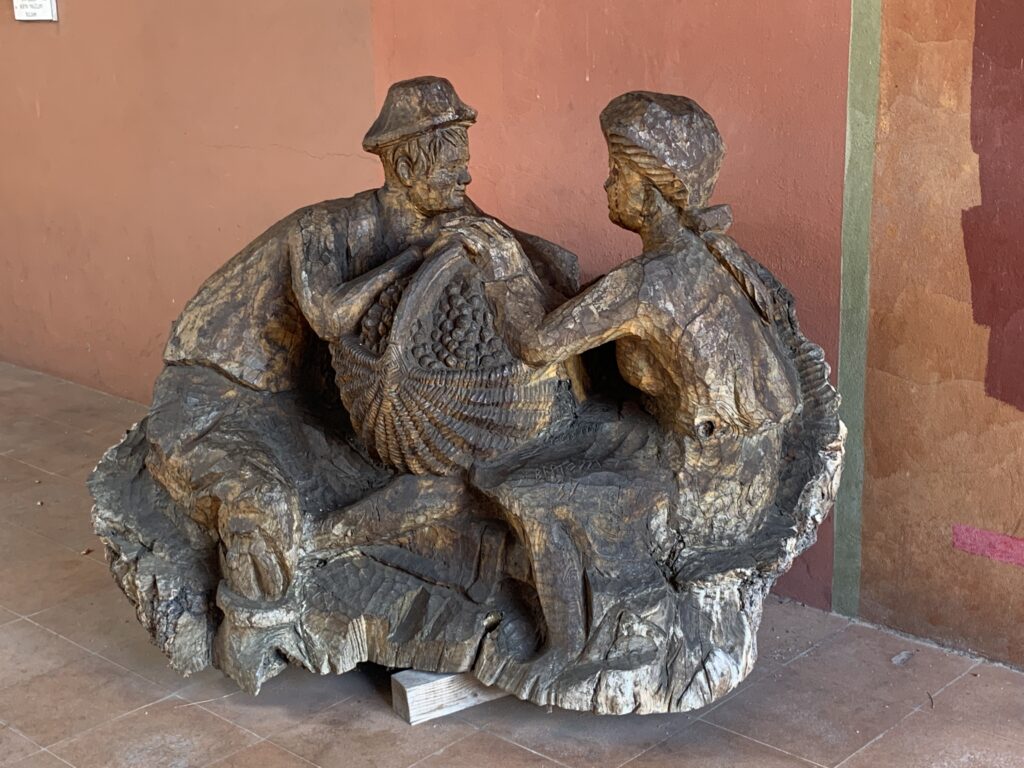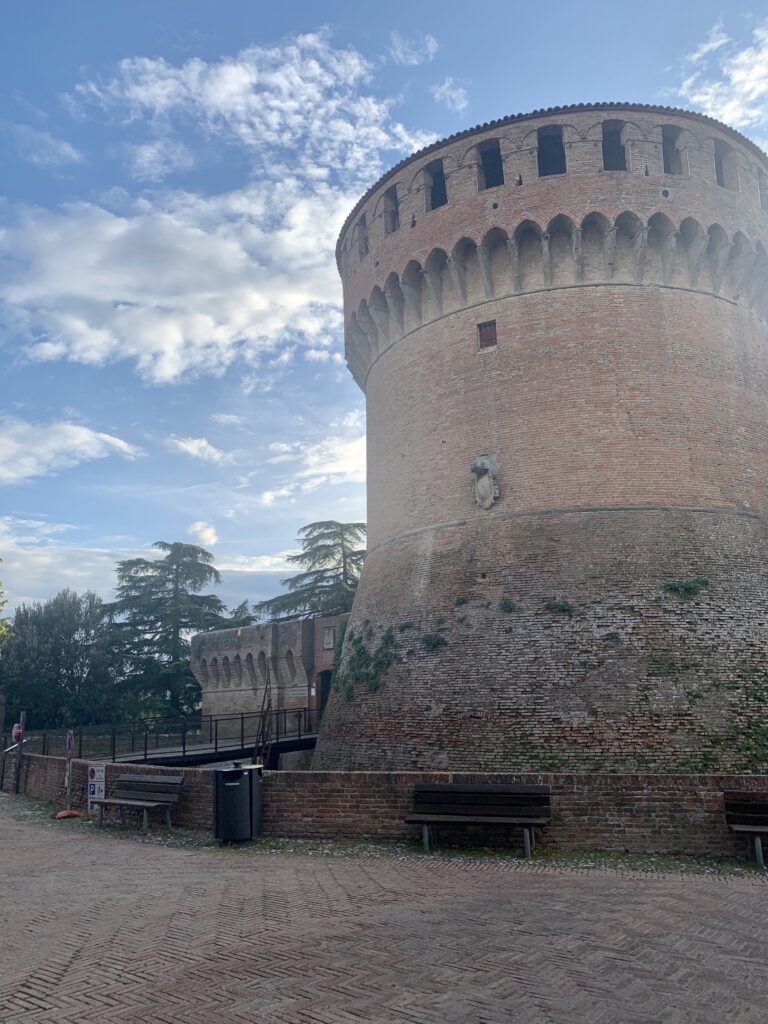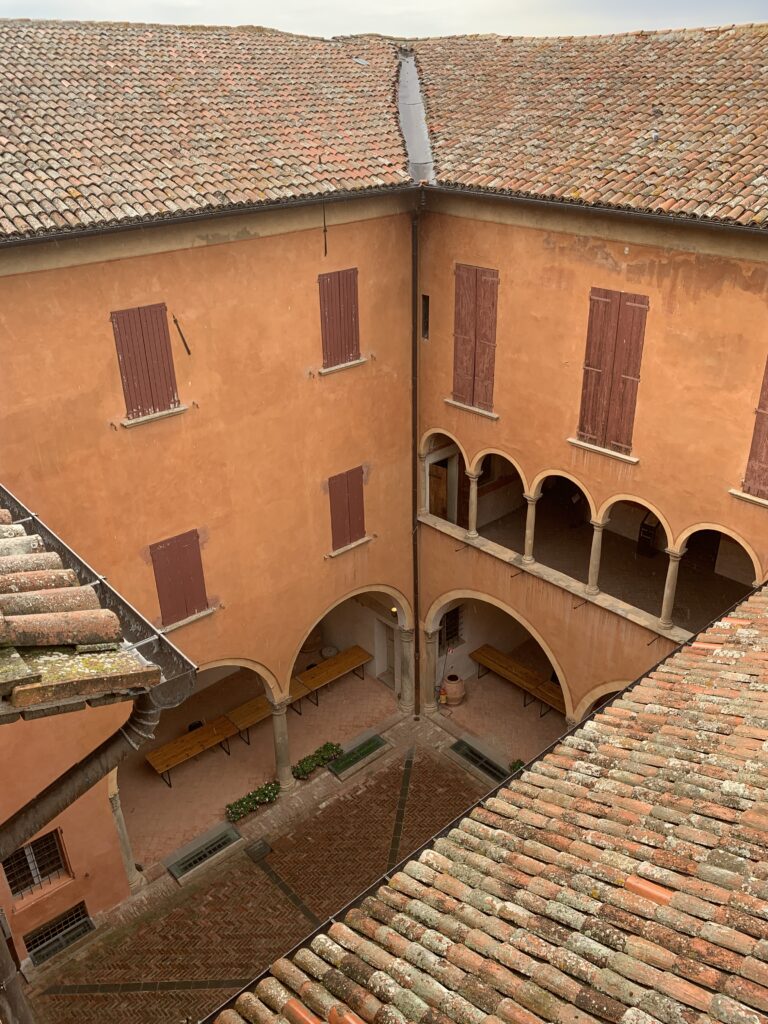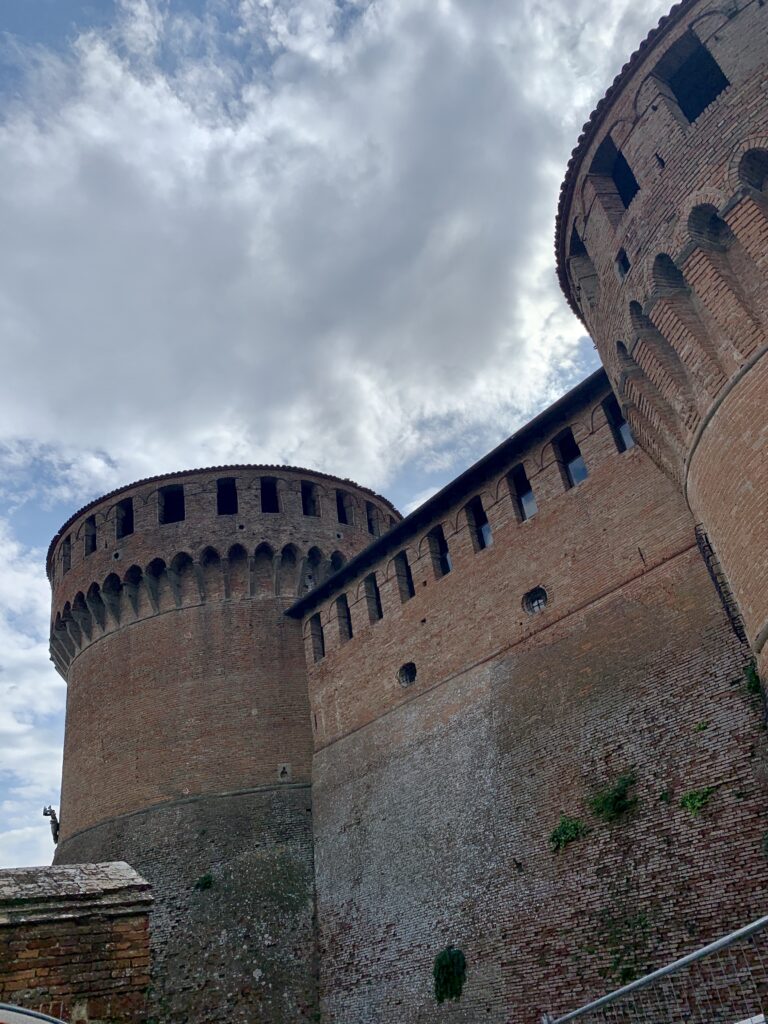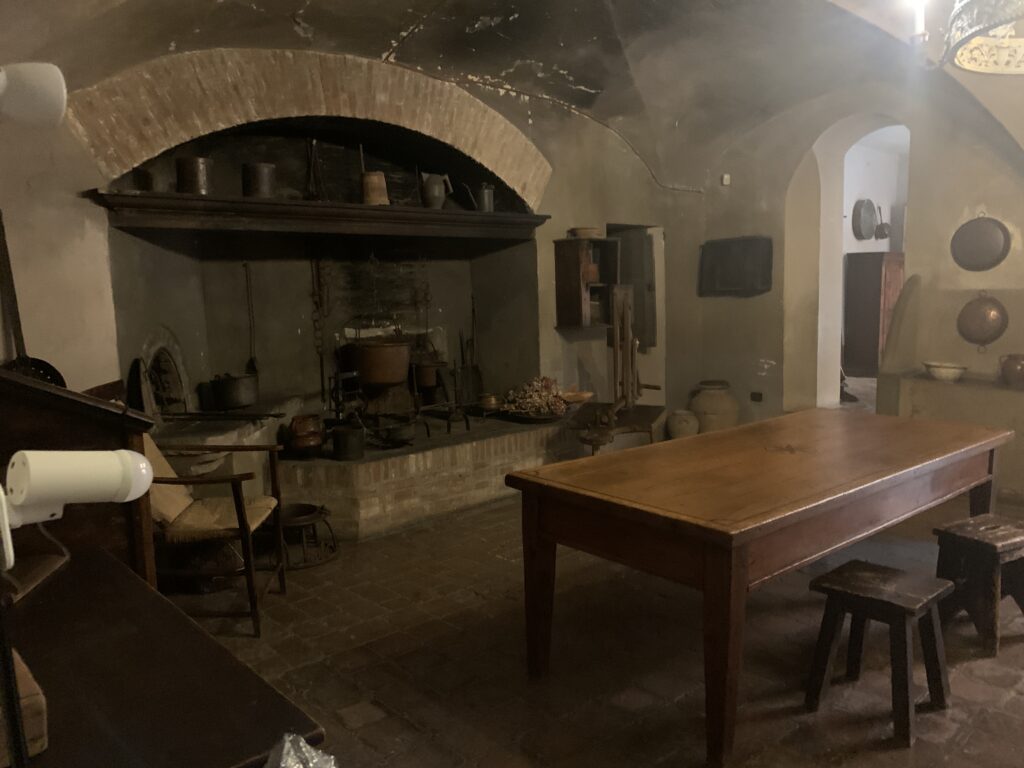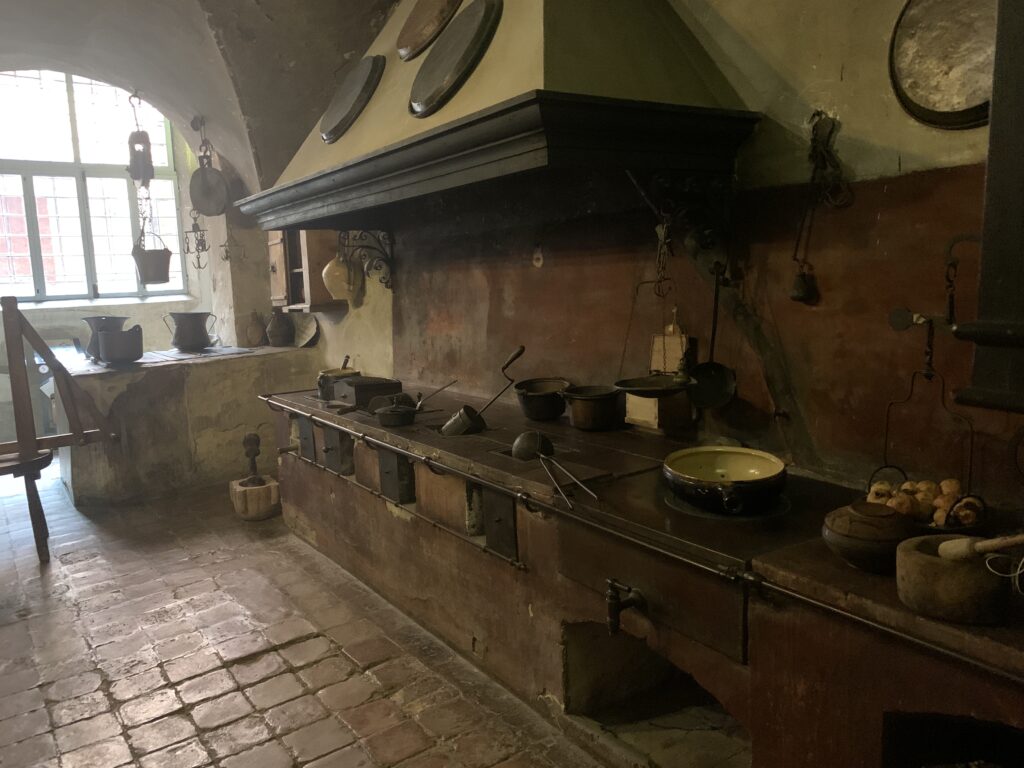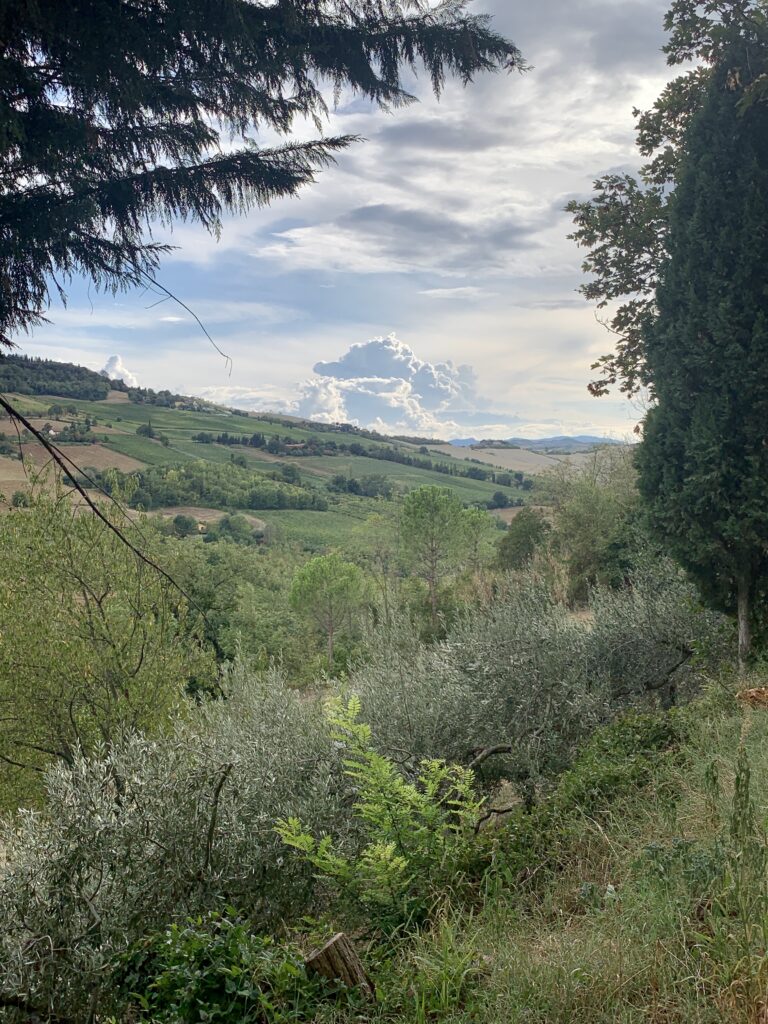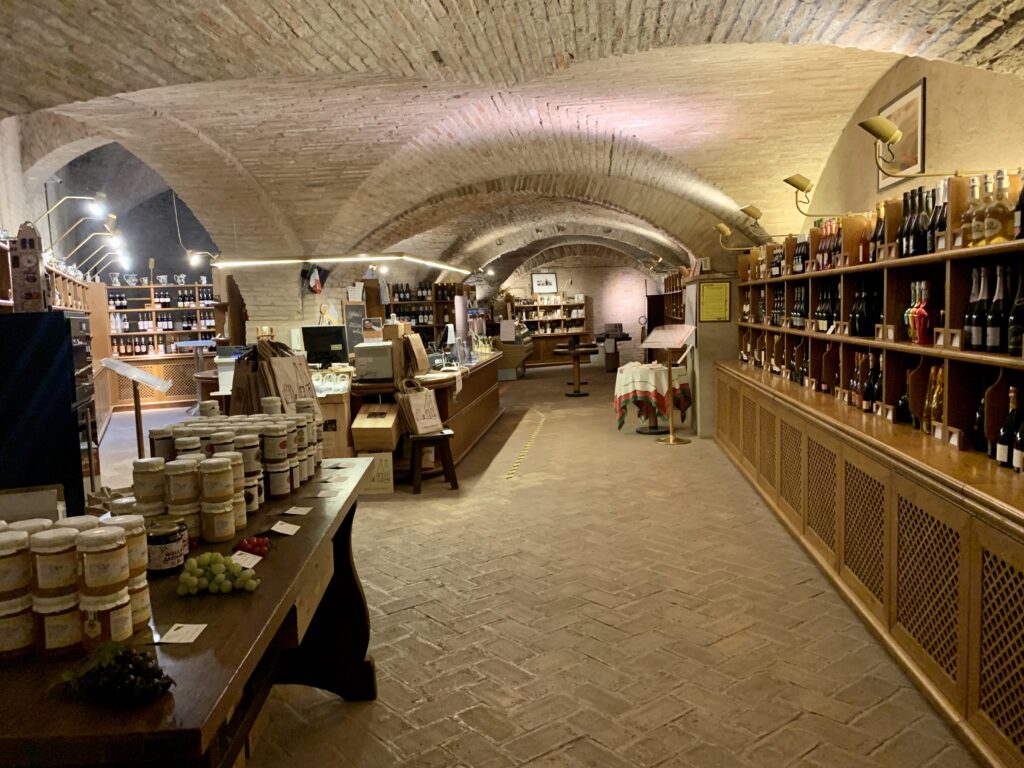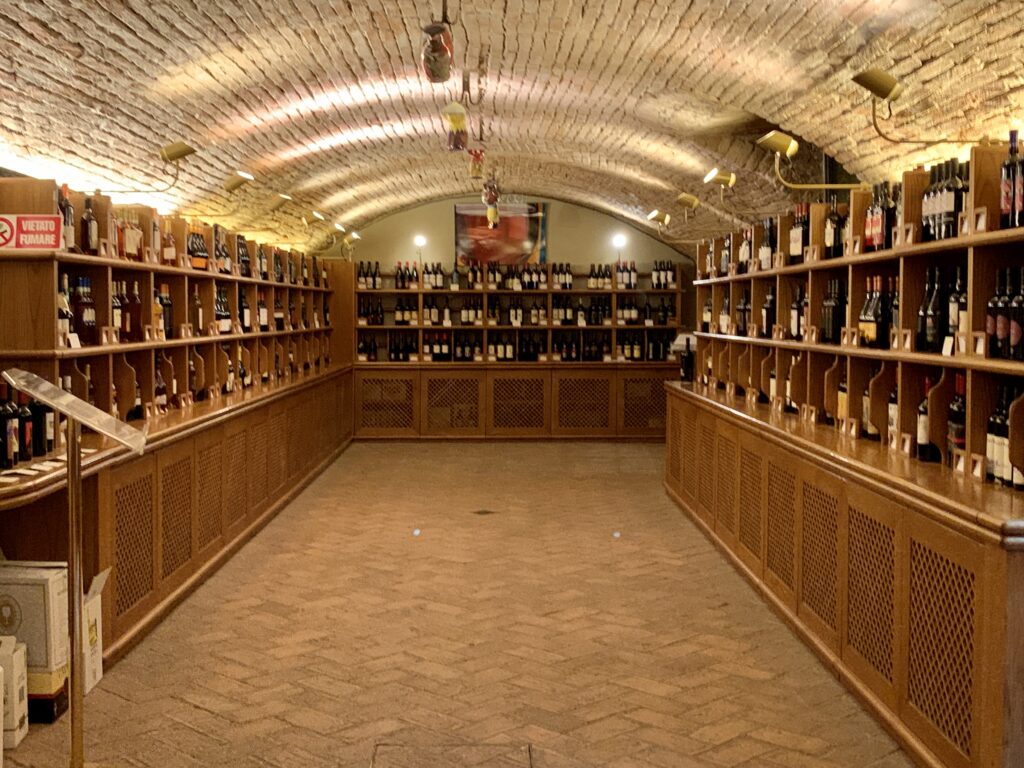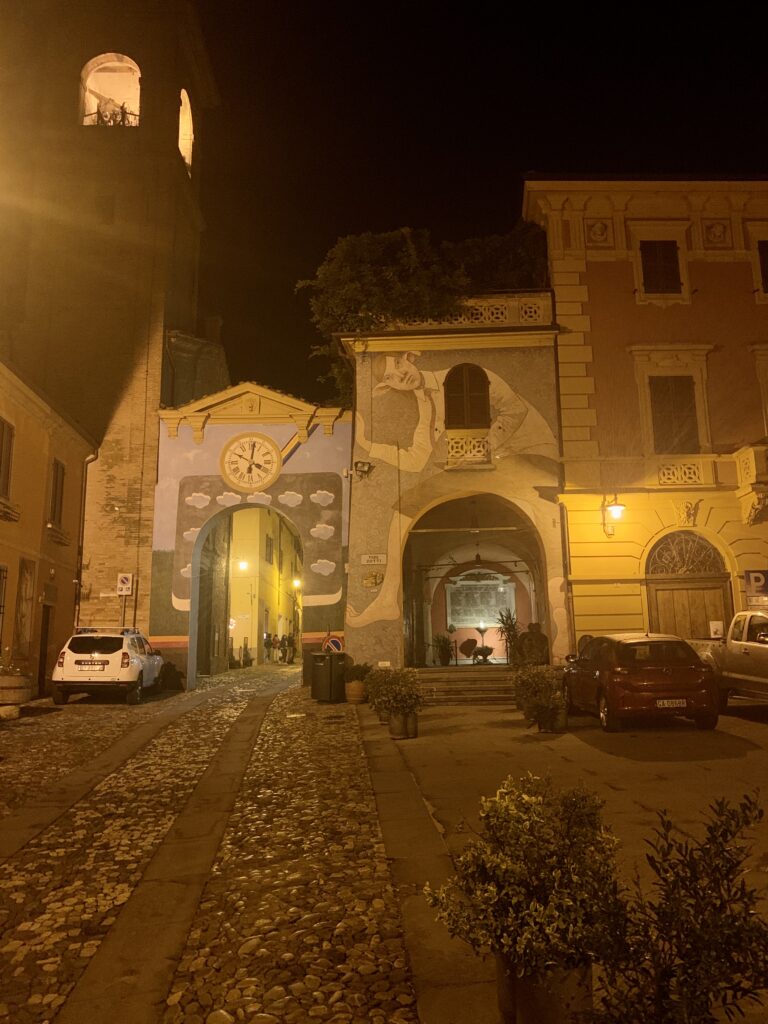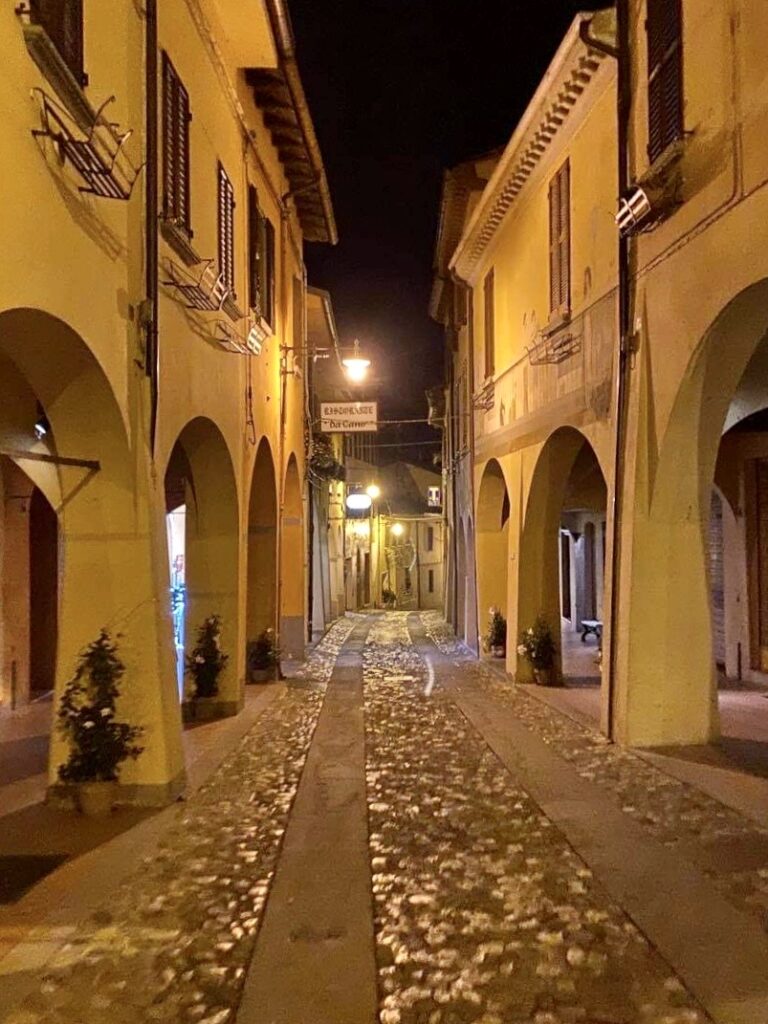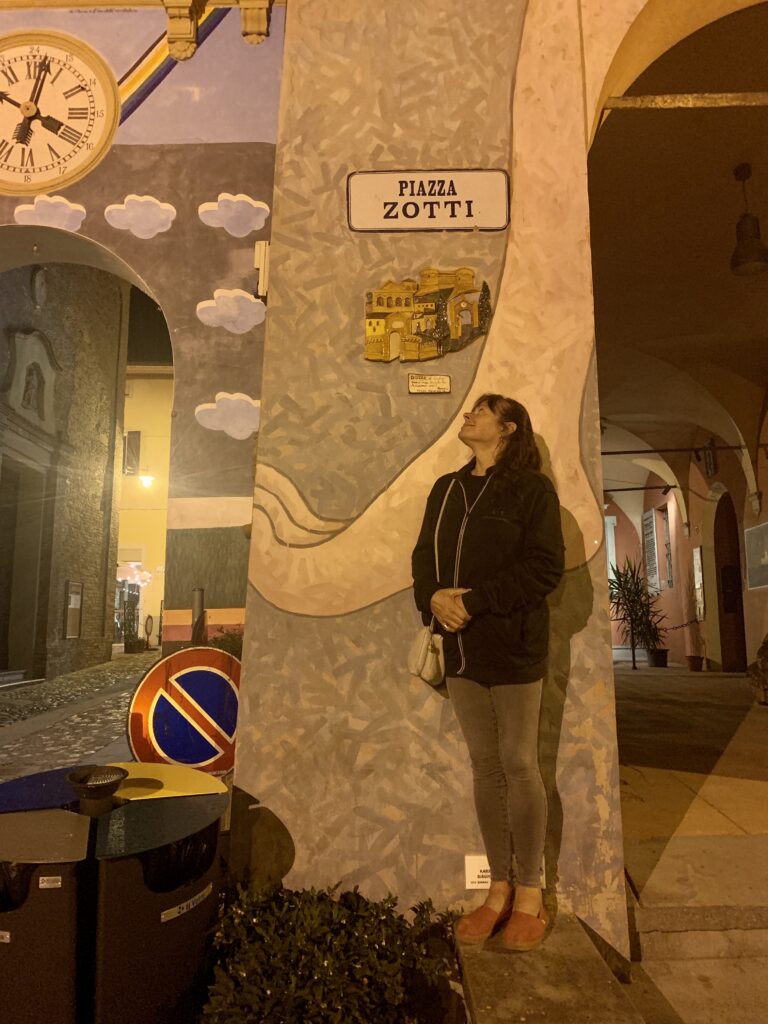Having made the decision to stay ahead of the rain by driving further east, we arrived next at Rivergaro in the Emilio-Romagnia Region. Those words almost make it seem as if we stumbled on Rivergaro by chance but, that was certainly not the case. Vanya puts considerable effort into finding unusual and interesting campsites and she did it once again with the Agriturismo L’Urteia in Rivergaro.
The Agriturismo L’Urteia is a model farm at the northern edge of Rivergaro which, over a period of time, has been developed further to include holiday lets, a small shop and a restaurant and, most recently, a small campsite which can currently accommodate 8 or 9 motorhomes (no caravans) and a few tents. It is well set out, spotlessly clean and has all the facilities that campers might need. The farm also brews their own range of craft beers. It’s a great little place within easy walking distance of the town too.
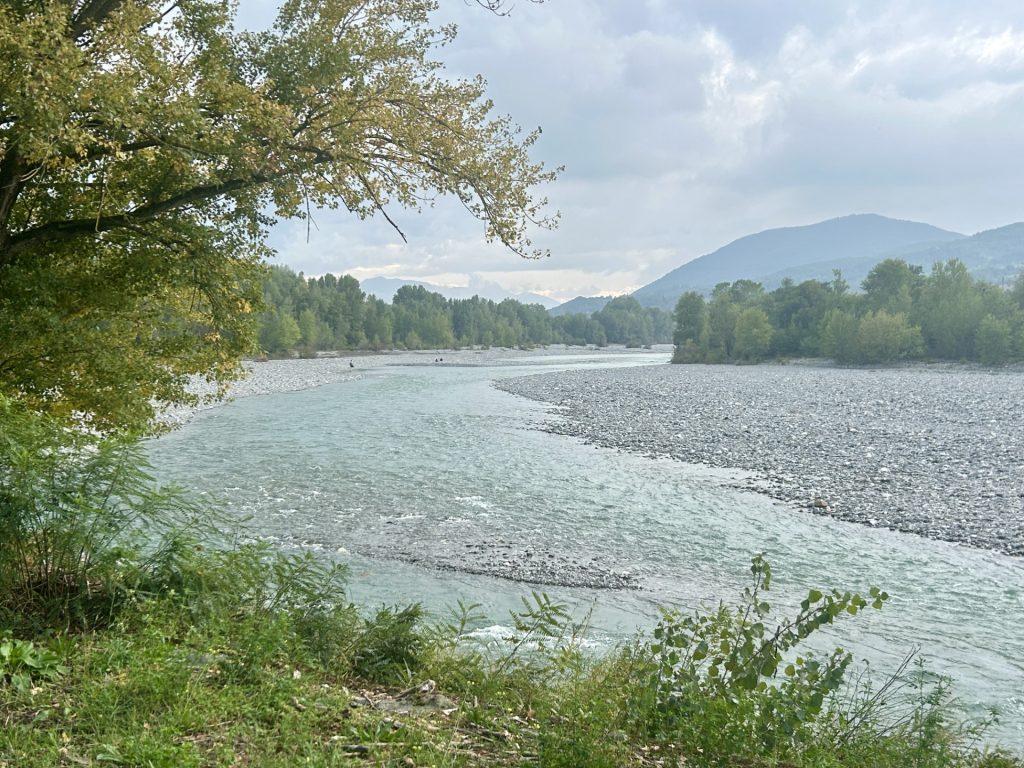
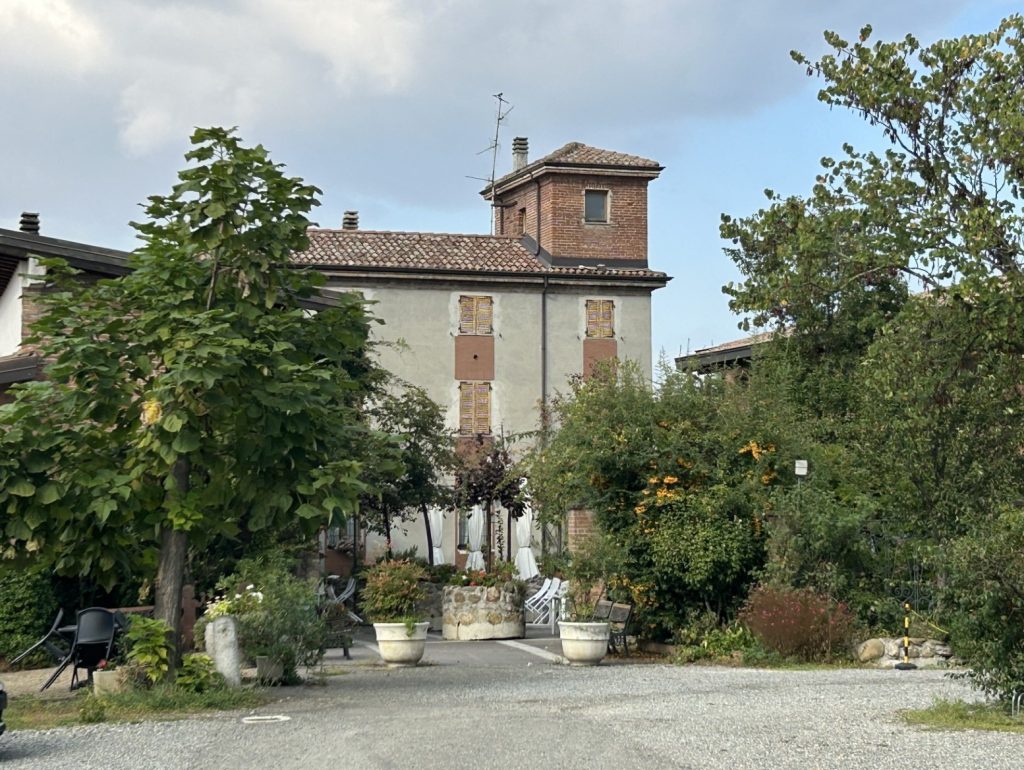
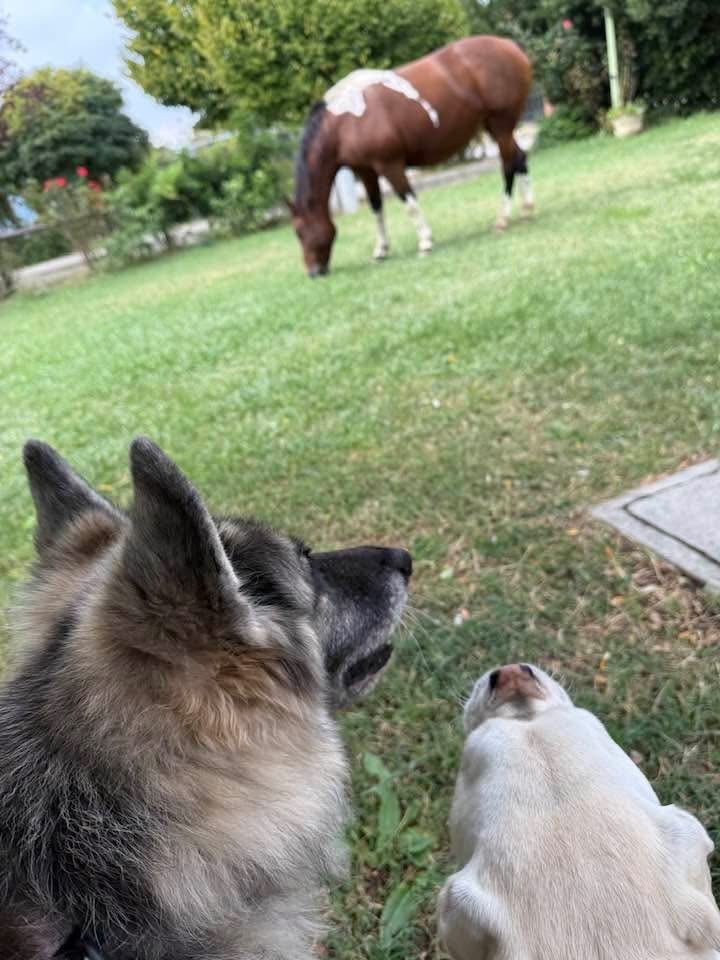
Rivergaro is a small town of some 7,000 inhabitants on the River Trebbia. It is considered to be the gateway to the Piacenza Hills and by extension to Emilio-Romagnia’s best Piacenza Wines. Vanya and I were pleasantly surprised by the local wines. I particularly liked the Gutturnio which is a soft red wine made from a blend of the locally grown Barbera and Bonarda (sometimes called Croatina) grapes while; Vanya was impressed by a fizzy white wine made entirely from the local Ortrugo grape known as Ortrugo dei Colli Piacentini. Both of the wines we tried are produced by a local family business ‘Podere Le Lame’ and came recommended by Marco, the owner of the Caffe Italia in Rivergaro.
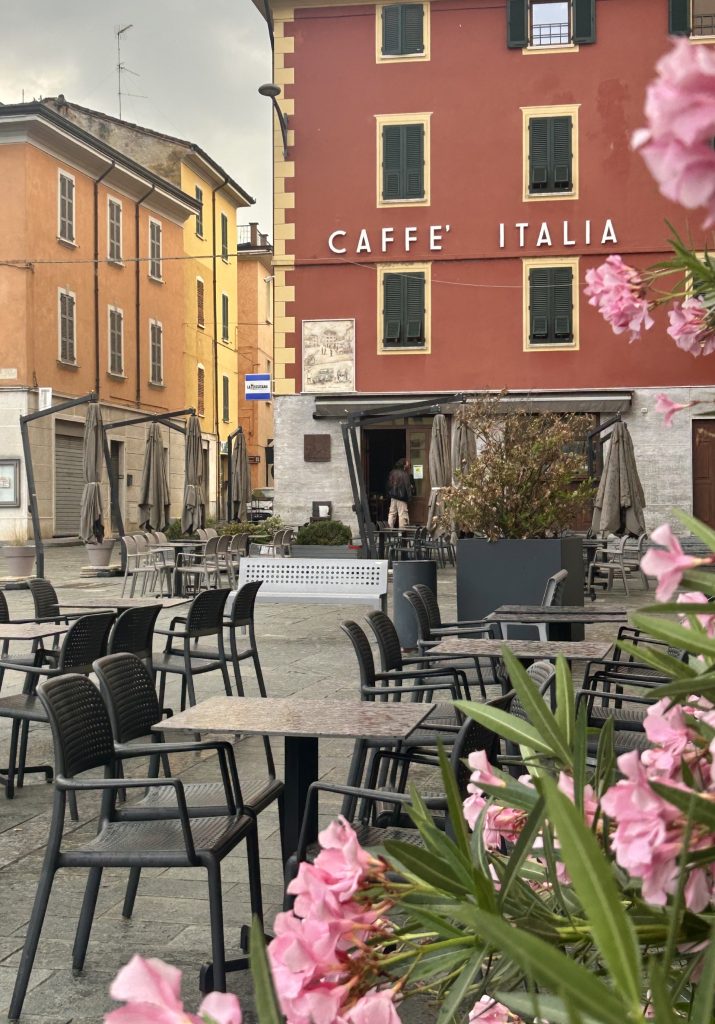
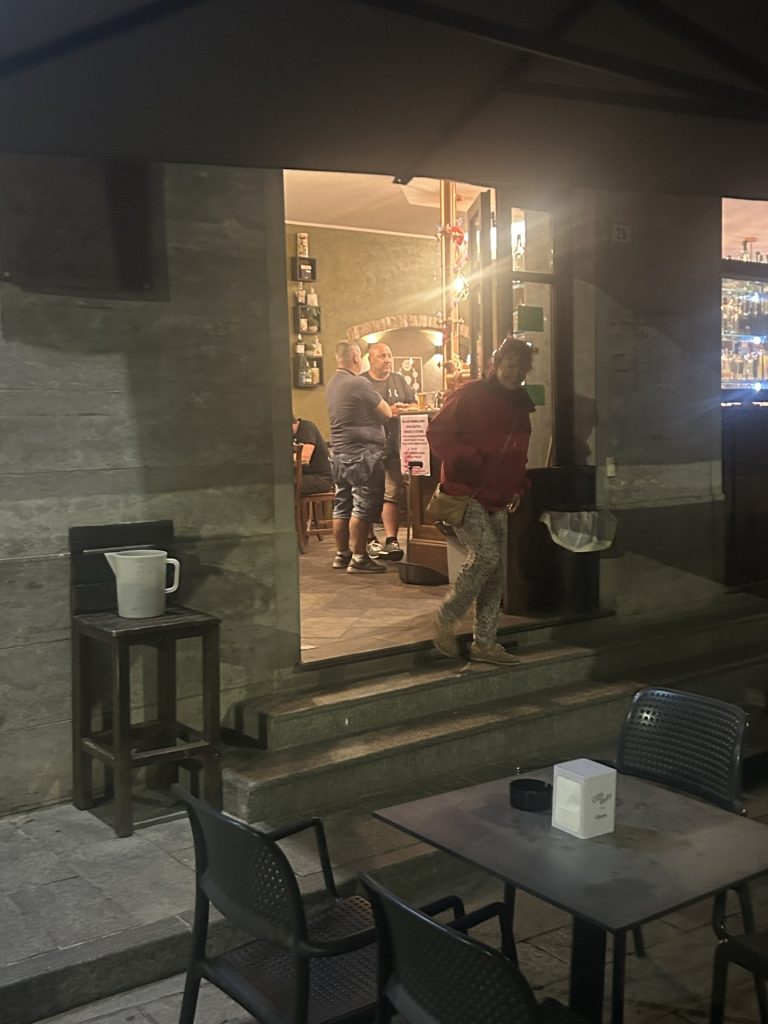
The town has a few interesting features being, the 19th century Parochial Church of Santa Agata on Via San Rocco; the 17th century Oratario San Rocco Pellegrino also on Via San Rocco and; the Santuario della Beata Vergine della Grazie (sometimes referred to as simply the Madonna della Grazie) which is up above the Piazza Paolo on Via Castello. The most pleasant part of the town for me however is the main square through which the Via Roma passes. This is where many of the locals socialise around noon and/or during the evening. I was delighted to be able to sit on the square early in the afternoon drinking coffee and again in the evening when Vanya and I had something to eat at the Caffe Italia. Lively town squares such as this are what make Italy.
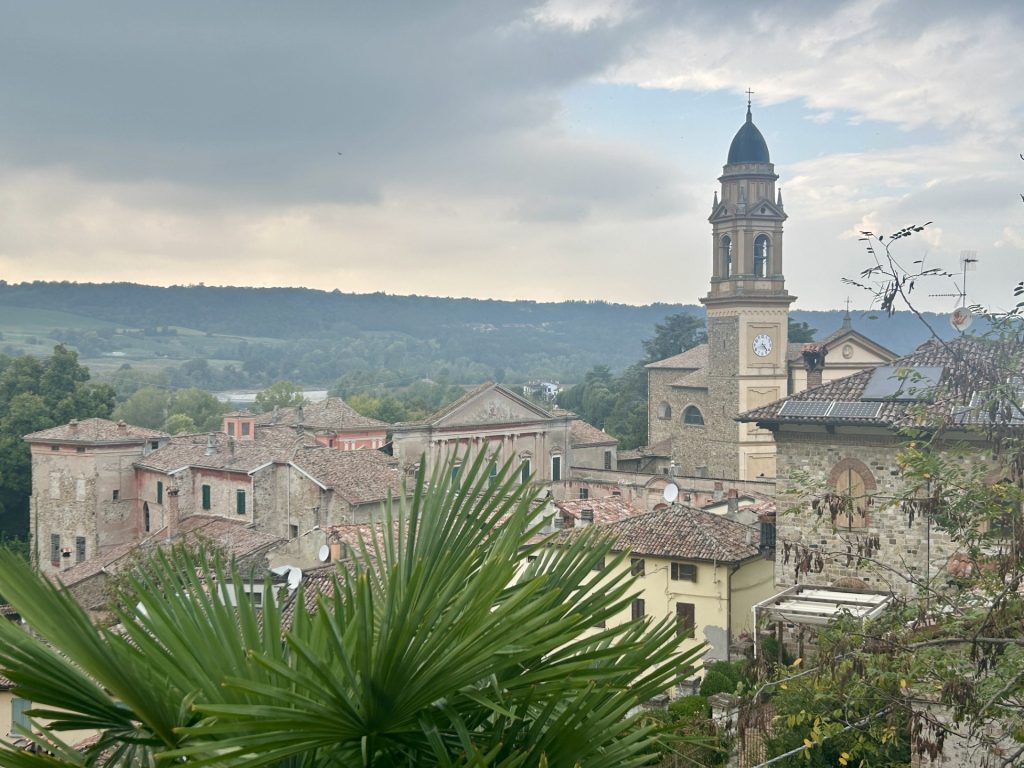
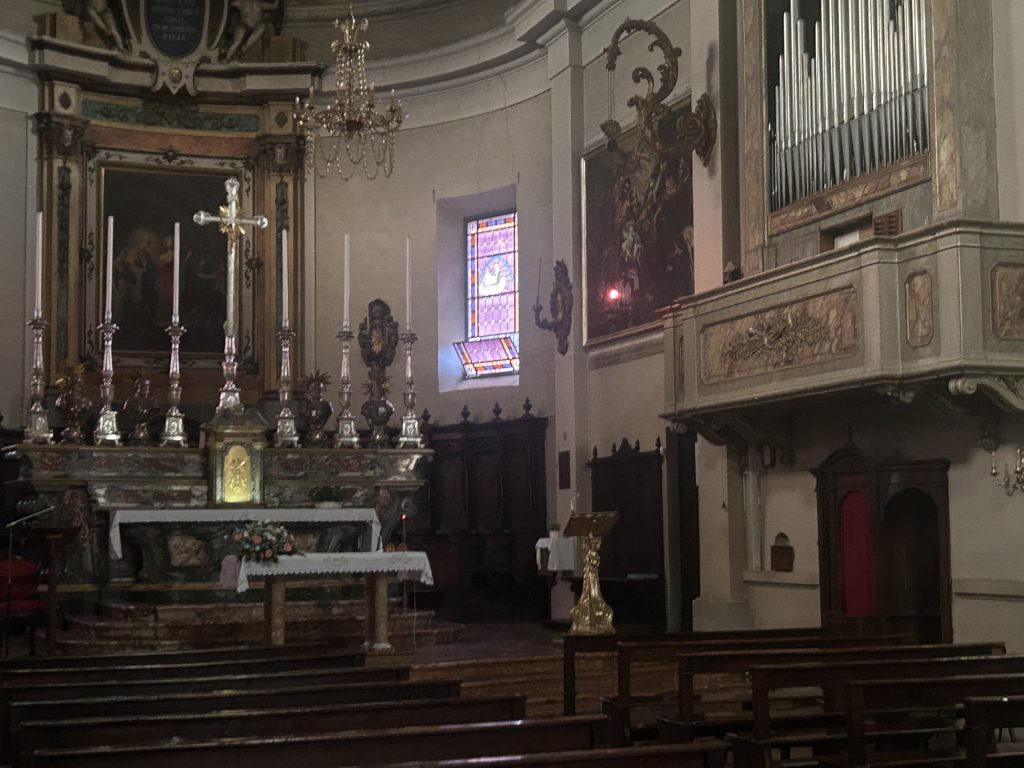

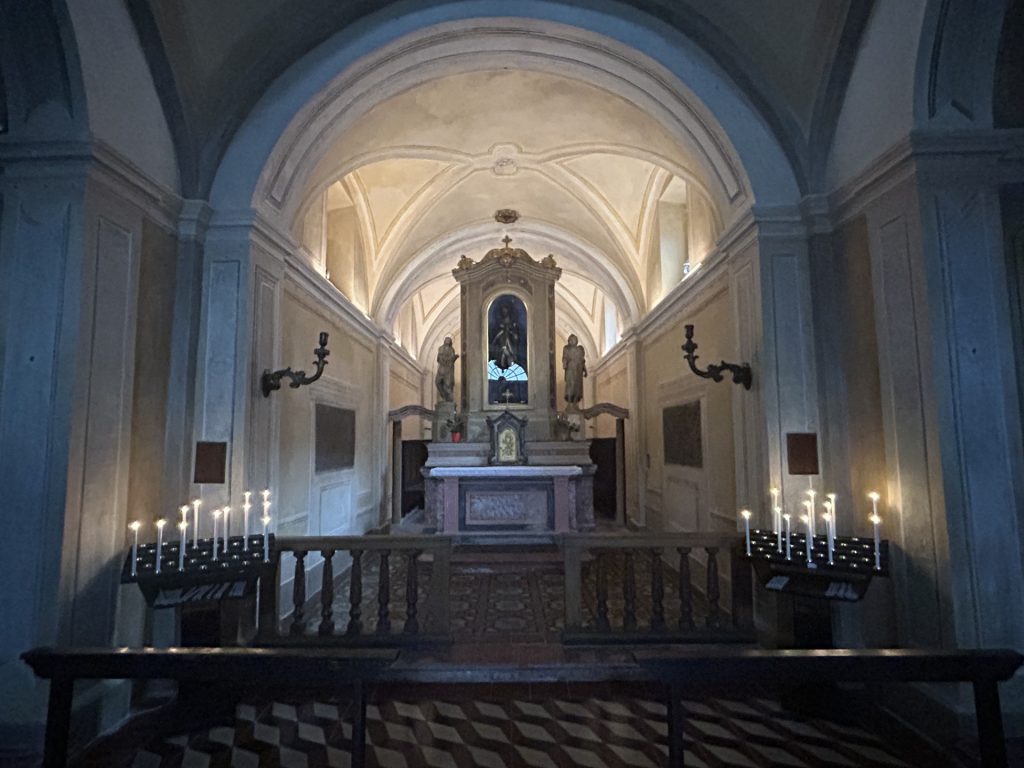
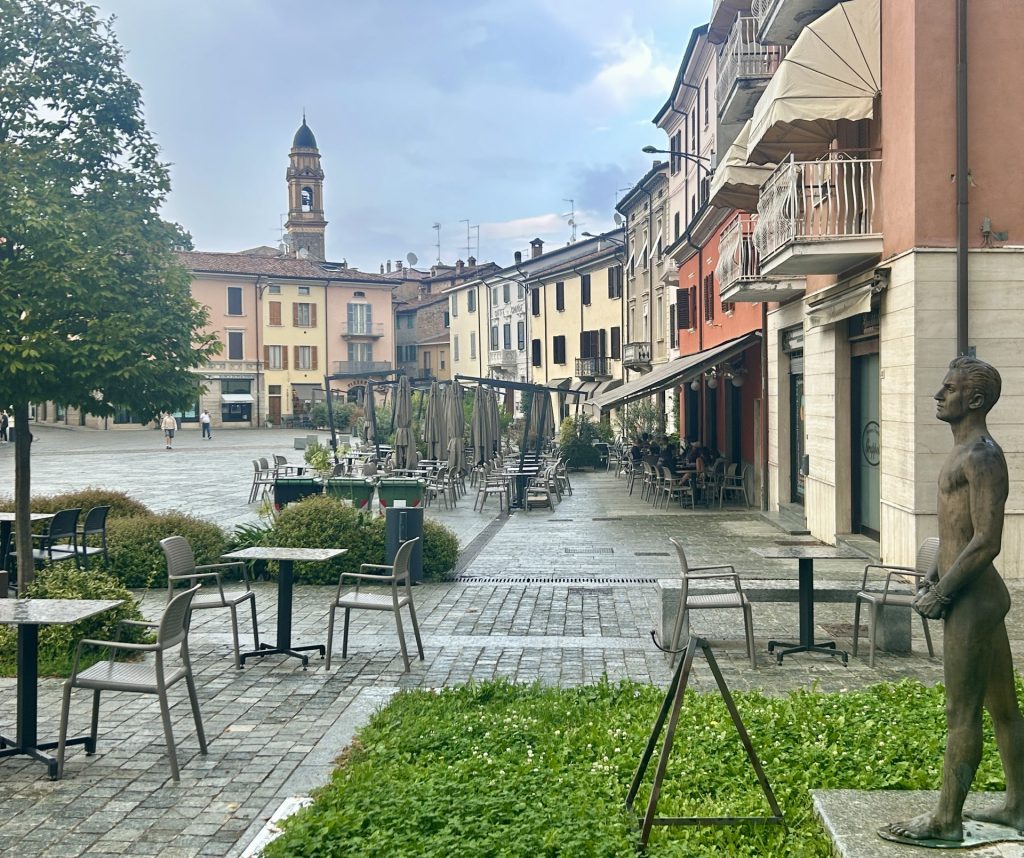
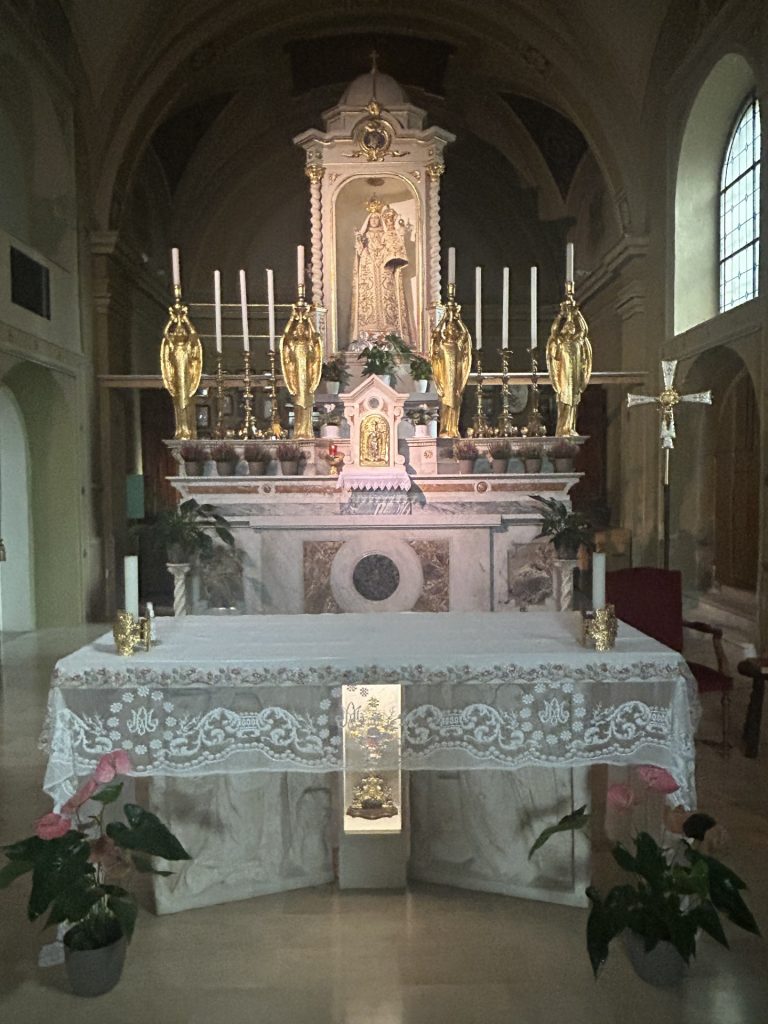
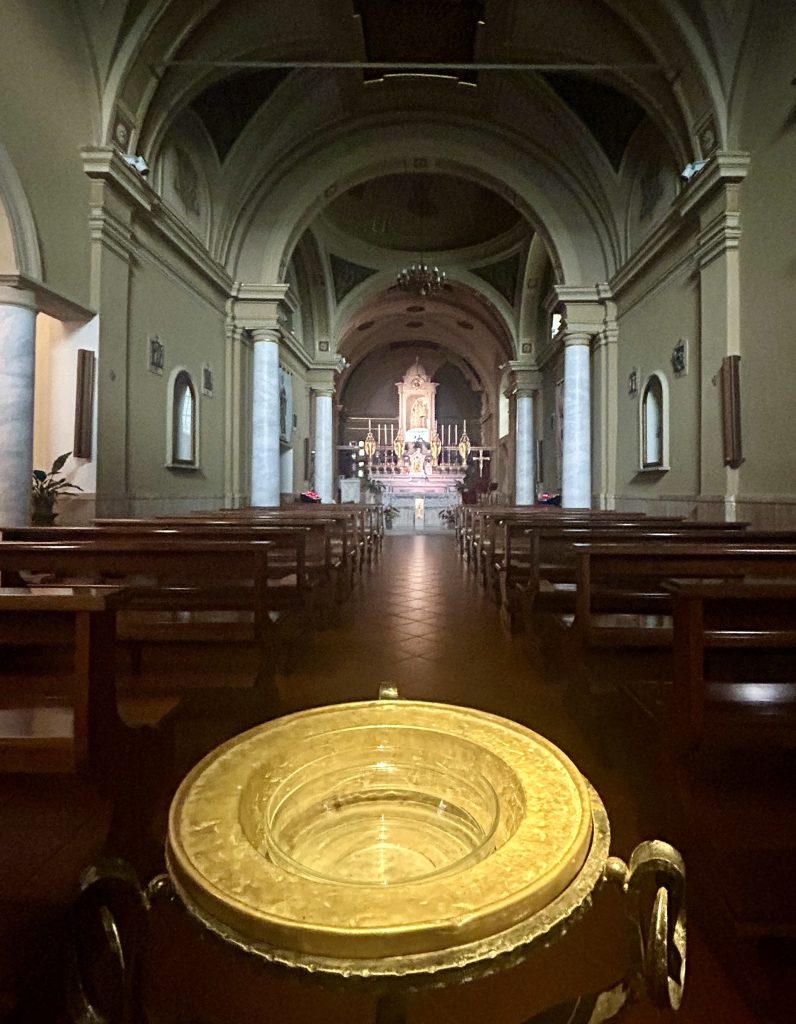
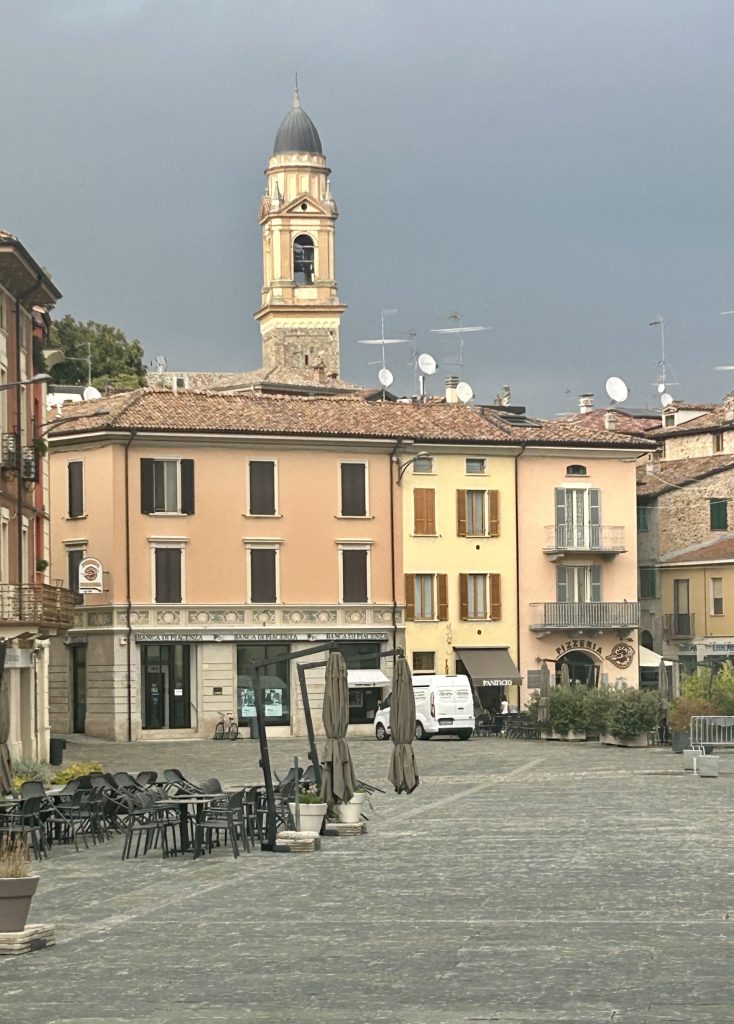

Throughout our short stay in Rivergaro, the weather was changeable (that’s a euphemism for “often wet”) but, it certainly didn’t deter the locals from getting out and about and the welcome we received from Marco in the Caffe Italia that evening was great. He simply couldn’t do enough for us and, after hearing that we didn’t have time to visit the Podero Le Lame winery to buy a bottle or two of the white wine which Vanya was enjoying so much, he gave us some at cost price. This is a place we will return to and we’re agreed that the ‘Urteia’ be classified as an Excellent Campsite. (https://www.urteia.it/en/camping)

